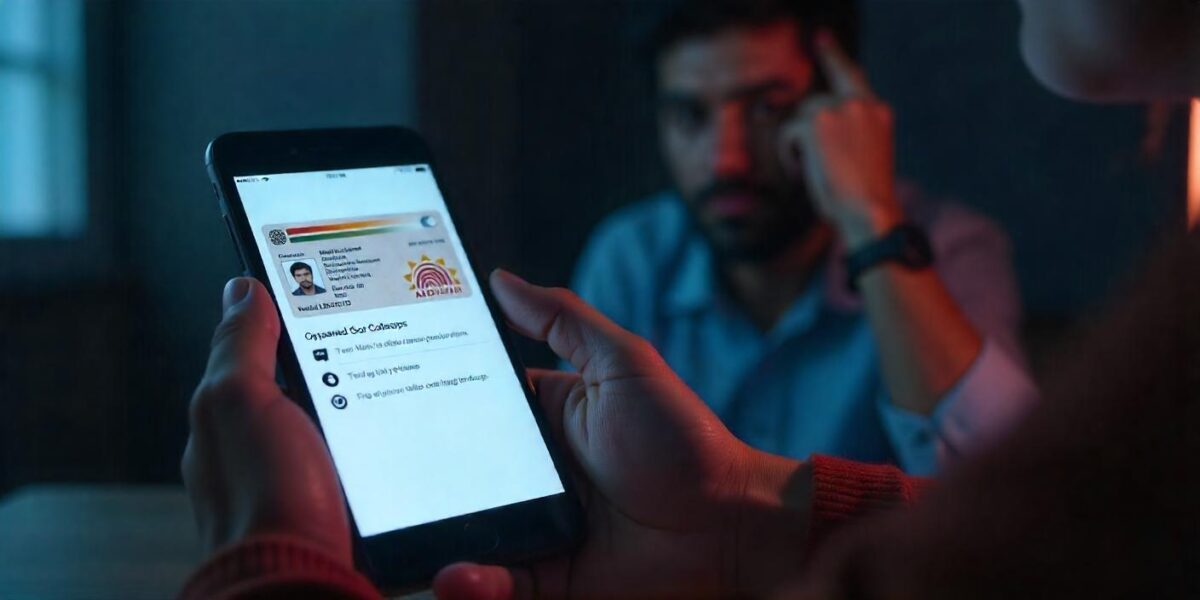“Sir, I’m telling you—this property is a steal! Prime location, excellent price. You won’t get a better deal in Daryaganj.”
Rahul, a mid-level executive at a tech firm, glanced at the man in front of him. The broker was confident, persuasive. Maybe even too persuasive.
“But it’s so much cheaper than similar properties. Why?” Rahul asked, tapping his fingers on the brochure.
The broker laughed. “That’s because we’re selling directly from the developer. No middlemen, no extra costs. You’re lucky, someone just backed out at the last moment, so you’re getting it at a discount.”
Rahul hesitated but eventually convinced himself. He had seen the property, talked to the people, checked the papers. Everything looked perfect. Or so he thought.
The Perfect Scam
Months later, Rahul sat in a lawyer’s office, staring at the paper in front of him.
“This flat you purchased,” the lawyer said, adjusting his glasses, “was already mortgaged to a bank. You never really owned it. The bank does.”
Rahul’s head spun. How was this even possible? He had paid nearly ₹80 lakh for this flat! The legal documents were clear. Or were they?
As he would later learn, he was just one of many who had fallen for an elaborate scam orchestrated by Moshin Mohammed, the director of M.K. Overseas Pvt. Ltd.
Between 2018 and 2019, Mohammed and his associates sold properties worth ₹13 crore, flats that legally weren’t even theirs to sell. And the buyers? They had no idea they were buying dreams built on debt.
How the Scam Worked?
Moshin Mohammed’s fraud wasn’t just a case of selling illegal properties, it was a well-planned financial heist that exploited legal loopholes and trust in the real estate market.
Let’s break down exactly how he pulled it off:
1. Securing a Massive Loan Using Real Estate as Collateral
Back in 2016, Moshin Mohammed, through his company M.K. Overseas Pvt. Ltd., applied for a ₹95 crore loan from a private bank.
- The collateral? A prime real estate property in Daryaganj, Delhi.
- On paper, this looked like a normal business loan, companies often mortgage properties to get working capital.
But here’s the catch:
The bank assumed that M.K. Overseas would either repay the loan in due time or surrender the property in case of default.
2. Constructing Flats on the Mortgaged Land
Between 2018 and 2019, instead of using the loan for business purposes, Mohammed built multiple flats on the mortgaged l
3. Selling the Flats Without Disclosure
Mohammed hired brokers and agents to find buyers, many of whom were middle-class professionals looking for affordable homes in Delhi.
- He offered deep discounts, making the properties appear like rare “below-market” deals.
- He provided fake NOCs (No Objection Certificates) and legal documents to prove the flats were clear for sale.
- The buyers, unaware that the land was mortgaged, paid the full amount to own their dream home.
By the time this phase was over, he had sold flats worth approximately ₹13 crore—all of it pure profit for him, since the properties weren’t even legally his to sell.
4. Pocketing the Money & Covering His Tracks
Once the buyers made their payments, the money didn’t go towards repaying the bank loan. Instead, Mohammed:
- Transferred crores into personal and business accounts.
- Funneled cash into multiple shell companies.
- Spent a significant amount on personal luxury expenses.
To avoid getting caught, he:
- Regularly changed phone numbers and used multiple SIM cards under different names.
- Used proxies (fake buyers) to move money, making the transactions harder to track.
- Dodged legal notices and bank warnings by providing false assurances and delaying tactics.
By the time the scam was uncovered, he had already vanished, and the homebuyers were left with worthless papers and no property to their name.
5. The Bank Discovers the Scam
In October 2021, when M.K. Overseas stopped repaying the bank loan, the bank attempted to seize the mortgaged property, only to discover it had been illegally sold.
- The buyers who had purchased the flats were now being told that they did not own their homes.
- The bank filed a formal complaint with the Economic Offences Wing (EOW) of the Delhi Police.
- Investigators soon found that this wasn’t Mohammed’s first scam; he had previously taken ₹300 crore in loans using similar tactics.
By 2024, after months of tracking, Mohammed was finally arrested, but the damage had already been done.
The Chase Begins
Tracking down Mohammed wasn’t easy. He had covered his tracks well, frequently changing phone numbers, using fake identities, and moving around to avoid arrest. He was a ghost in the real estate world, appearing only when money was to be made.
For nearly two years, he played a game of cat and mouse with the authorities. But as with all scams, it was only a matter of time before the web he had spun caught up with him.
In 2024, after months of investigation and intelligence gathering, Delhi Police finally caught up with Mohammed.
He was arrested, and the details of his fraudulent empire came crashing down.
Turns out, this was not even his first rodeo.
His company had been involved in multiple similar frauds. In total, he had taken over ₹300 crore in loans from different banks, mortgaging multiple properties, many of which were either disputed or sold off illegally.
The homebuyers were left devastated. They had lost their money, and their homes now belonged to a bank that had no sympathy for their plight.
Rahul, like many others, was now caught in an endless legal battle.
“But I paid for it. I did everything right,” he muttered, still struggling to believe what had happened.
The lawyer sighed. “You did. But the system? It didn’t.”
Why Did This Scam Work So Well?
- Lack of due diligence by buyers – Most buyers failed to check whether the land was already mortgaged.
- Bank’s slow action – The bank only acted when payments stopped, by which time the flats had already been sold.
- Manipulation of property records – Mohammed created fake legal documents to make the sales look legitimate.
- Legal loopholes – Once a property is sold multiple times, ownership disputes become complex and difficult to resolve quickly.
The Aftermath: Who Pays the Price?
- The homebuyers lost their money. Many of them were left fighting a legal battle with no guarantee of getting their homes back.
- The bank suffered losses. The collateral was gone, and recovering the full loan amount became a nightmare.
- Mohammed got arrested, but he had already pocketed crores. Whether the victims would ever see their money again remains uncertain.
This is why real estate scams remain one of the most dangerous financial frauds, because at the end of the day, it’s the common man who suffers the most.







